The Space Force Turns One
The newest branch of the U.S. armed services pitches its tent on a vast battlefield.
/https://tf-cmsv2-smithsonianmag-media.s3.amazonaws.com/filer/11/da/11da3775-c198-4c62-b56b-64a55b030b42/05q_dj2021_spaceforcepersonnel_6338358_live.jpg)
Of the more than 2,000 active satellites currently in low Earth orbit, Kosmos 2543 may be the most notorious.
Russia launched the spacecraft on November 25, 2019, as a small “inspector” satellite designed to check on the country’s own satellites in orbit. But within a couple weeks of launch, it separated from its mothership, and in January, civilian space watchers alerted the world that both spacecraft had sidled up into roughly the same orbit as USA 245, an American reconnaissance satellite.
Michael Thompson, an astrodynamics graduate student at Purdue University, was one of the first civilians to spot the maneuver in orbital data posted online. “Something to potentially watch,” he tweeted on January 30. “This is all circumstantial evidence, but there are a hell of a lot of circumstances that make it look like a known Russian inspection satellite is currently inspecting a known U.S. spy satellite.”
Sky watchers monitored the satellite chase overhead as Kosmos 2543 closed the distance and then, days later, backed away. The State Department officially complained, although the U.S. government never disclosed the identity of its own satellite.
On July 15 the now infamous Kosmos 2543 performed its next trick by deploying an object that appeared to jet away from it, then pass within a few kilometers of another Russian satellite it was observing. Or was it targeting it?
“There was no noticeable change of the parent satellite’s orbit,” said Jonathan McDowell, an astrophysicist and sky watcher at the Harvard-Smithsonian Center for Astrophysics, via Twitter. “I suspect the object carried its own rocket motor, so ejected gently then fired motor.”
It was a noiseless shot, but it was heard around the world. A week later the U.S. government officially called the new object an “anti-satellite weapon” and protested in stern public statements.
The test wouldn’t have needed to strike anything to be a technical success. Data on targeting, deployment, and engine performance would have been enough to advance the technology. In fact, a non-destructive test is preferable, as it produces no debris and provides straight-faced deniability that Kosmos 2543 was in fact designed as a weapon.
It could also have been intended as a diplomatic message. “It may have been a coincidence, but [Russia] performed that test just before they sat down in Vienna for direct U.S. and Russian talks about space security,” says Todd Harrison, director of the Aerospace Security Project at the Center for Strategic and International Studies (CSIS), a think tank in Washington. “It very well could have been, ‘Hey, we’re letting you know, before we sit down to talk, that we’ve got a gun cocked and loaded at your head.’ ”
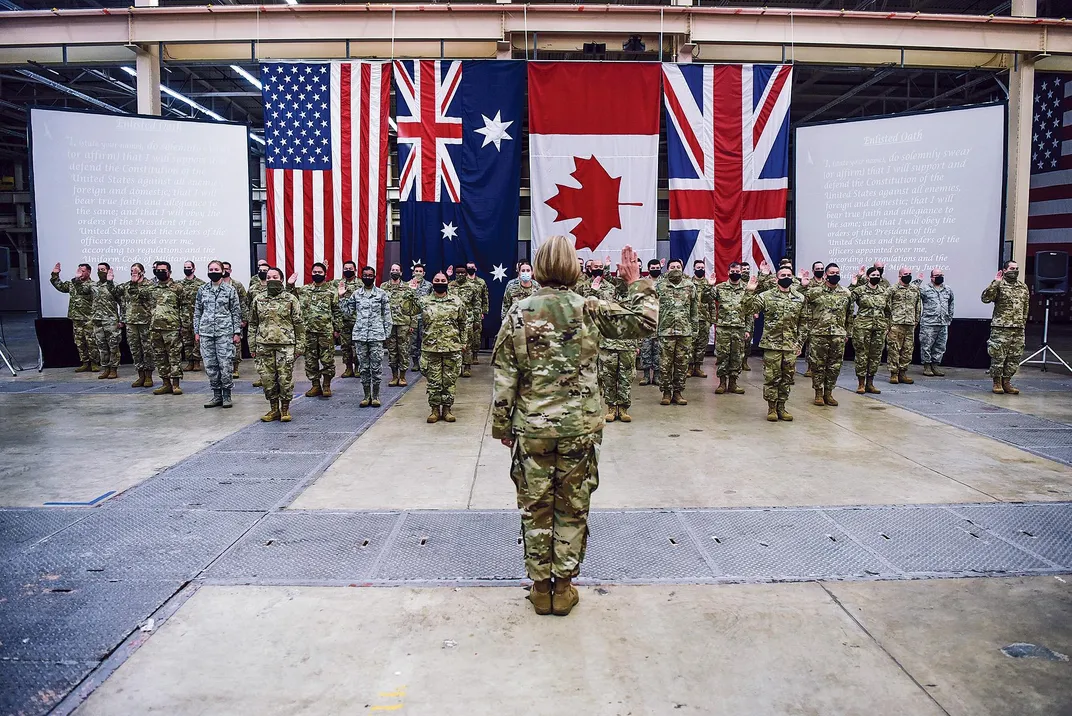
This sort of threat is exactly what the United States Space Force, marking its first anniversary in December, was created to address. “One of the best arguments for the creation of the Space Force…has been the compelling case our competitors have created for us,” the service’s top officer, Chief of Space Operations General John “Jay” Raymond, says. Before taking this new job, Raymond headed the U.S. Space Command at Peterson Air Force Base in Colorado. Long before that, back in the mid-2000s, he was director of space forces for the war in Afghanistan.
Like its chief, most people in the new service come from other parts of the military, although many were already working in the space arena.
“To be completely honest, I had no idea what space even was when I came into the Air Force,” says Major Danielle Ryan, chief of weapons and tactics for the 527th Space Aggressor Squadron, one of about two dozen Air Force units absorbed into the newest branch of the armed forces over the past year. “I went to the Air Force Academy, and I was more interested in engineering. But I’d put down Cape Canaveral on my dream sheet, and from there I got into space launch. My recruiter told me that it’s kind of like winning the lottery, in a sense,” Ryan says. “I’d be stupid not to take it.”
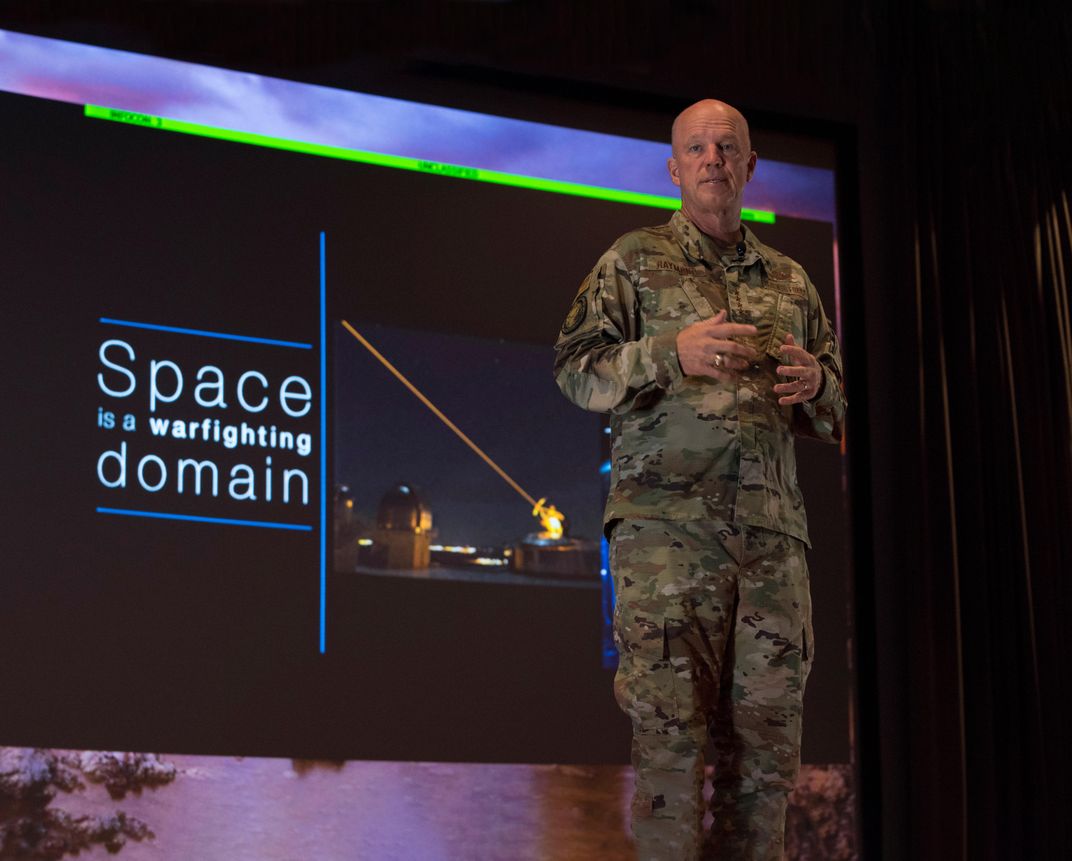
Now the 2010 academy graduate is an officer in the Space Force and a member of the 527th, headquartered at Schriever Air Force Base 12 miles east of Peterson in the suburbs of Colorado Springs. One of the squadron’s main jobs is to act as the enemy during military exercises in which space assets like navigation and communications satellites are compromised or taken out. The 30 or so members of the 527th call themselves Aggressors, although during exercises some are referred to as “Vaders,” after the movie villain.
As weapons chief, Ryan needs to be expert in the activities of potential space adversaries like Russia and China—which released its own mysterious smallsat in orbit in September—so she can emulate them. “I work very closely with our intelligence flight,” she says, referring to the squadron’s in-house intelligence staff. “They do the intel on what is actually going on in orbit and on the ground.... I change that into different tactics that we then replicate with the equipment we have and take that to exercises.”

The Aggressors are among the more than 2,000 personnel already transferred into the Space Force, which is expected to grow eventually to 16,000 people. That would make it, by a wide margin, the smallest military service. Even the Coast Guard boasts 40,000 uniformed members. The majority of Space Force personnel are coming from the Air Force. In contrast, the Navy is expected to lose fewer than 100 people to permanent Space Force transfers.
The Space Force also put out a call last May for recruits. The ads online and on TV showed young men and women looking dreamily up at the night sky, while the voiceover spoke of stars and exploration. No mention of cyber or any other kind of warfare, but then, it was only a commercial.
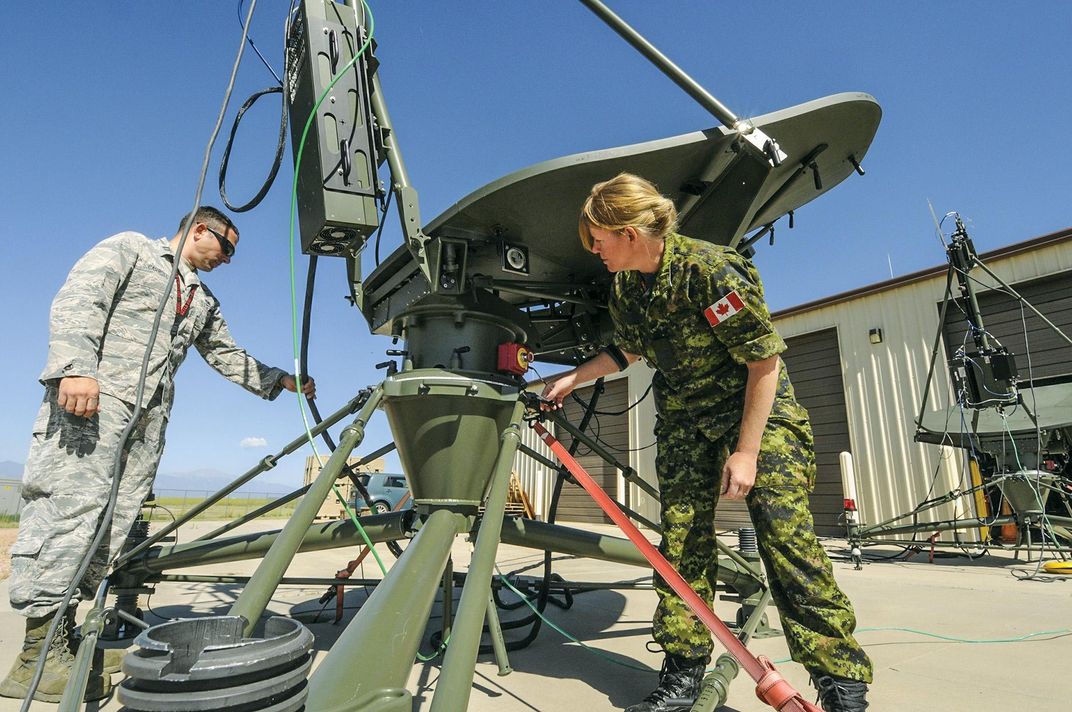
Inside the Barn
In the southwest corner of Schriever is a tin-roof, two-story operations warehouse known as “The Barn,” where the Aggressors go about their business of mimicking threats in the opaque, ever-changing battlefield of space. The mission is not entirely new. The 527th has roots in the electronic warfare battles of Vietnam, and it stood up in 2000 as the first dedicated space aggressor unit. But it has taken on a fresh importance under a new command. When the Space Force took over the 527th and other squadrons last July, “garrisons” and “deltas” replaced “wings.” For the time being, the Aggressors belong to the Space Training and Readiness (STAR) Delta, but eventually the Space Training and Readiness Command (yes, STARCOM) is scheduled to activate, and they will make their home there.
STARCOM will be one of three field commands. Space Operations Command, built on the bones of Air Force Space Command at Peterson, handles the day-to-day work of monitoring, operating, and protecting U.S. spacecraft. Space Systems Command will design and acquire satellites and other new hardware, including vehicles. Don’t expect a Space Force astronaut corps in the immediate future, however. Although one Space Force higher-up, Major General John Shaw, was quoted recently saying, “At some point, yes, we will be putting humans into space,” the service’s vice chief of space operations, General David Thompson, threw cold water on any notions of sci-fi Star Troopers. “When do we expect to have boots on the moon? No idea. Certainly not in my career,” he said at a recent conference.
The first year of the Space Force’s existence was spent defending its existence against ridicule (including an unflattering Netflix sitcom) and working out the organization chart. Next year will be spent herding most, but not all, of the remaining military space programs into their stable and broadening their reach. “Year Two is all about flexing our muscles as an independent service,” says Raymond.
The Aggressors may seem like a small piece in this massive reshuffling, but their work is of growing urgency as more foreign counterspace threats emerge. Theirs is a “high demand unit,” according to its members. Almost every branch of the military depends, often critically, on space assets. When any training exercise needs a bad guy to attack those assets, they call the Vaders. “They’ll come up with desired objectives: what they want to learn, how tough an environment they want, if they want to prep for today’s war, or if they want to prep for war 20 years down the road,” Ryan says. “As we go forward, we’ll continue to develop on the orbital side,” says Lieutenant Colonel Jennifer Hodges, commander of the 527th, suggesting that they will be simulating even more orbital dogfights between spacecraft locked in noiseless battle.
Any romance associated with the Vader moniker is lost on Major Ryan. She’s never watched any of the Star Wars franchise, nor Star Trek, The Expanse or even Doctor Who. “What we see in the field today may be in a movie that I haven’t seen,” she says. “But just because I don’t like sci-fi, doesn’t mean I can’t replicate.”
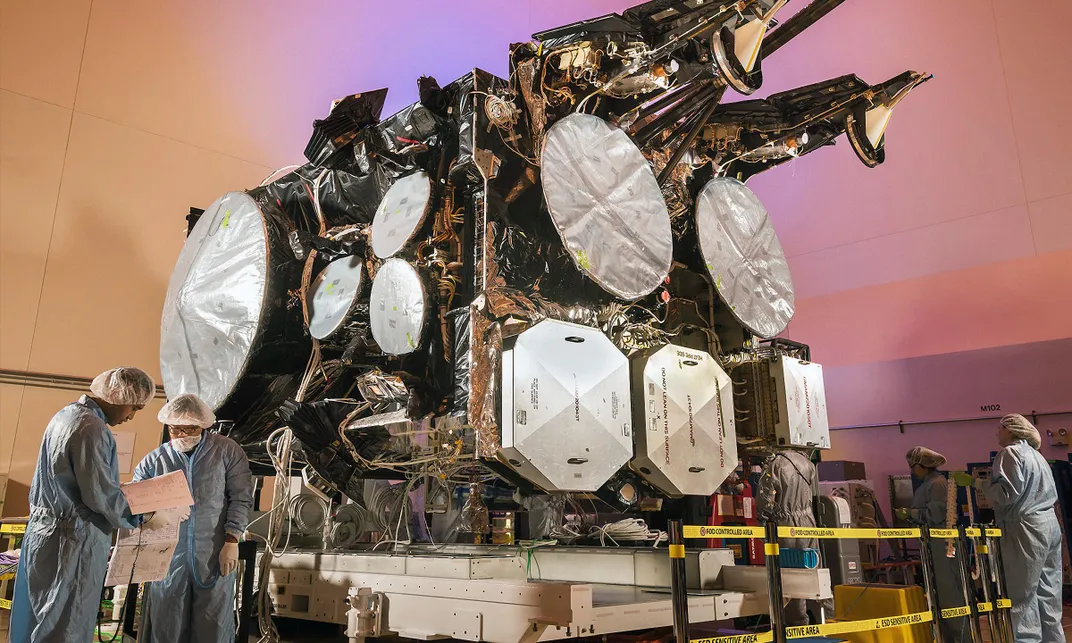
Threat Level One
Every member of the 527th holds a Top Secret/Sensitive Compartmented Information security clearance. Their work by necessity includes access to classified information about the military capabilities of all possible adversaries, using a data-sharing tool they call a threat matrix framework.
The matrix ranks space threats from one to five. “Level One could be something that we see today,” Ryan says. “Level Three is maybe a more difficult adversary than we see today. Level Five is going to be more like 20 years in the future.” The Aggressors won’t say what weapons belong at which level, but open-source records provide some idea.
The most persistent attacks today are ground-based electronic attacks on GPS navigation signals and communications. On a regular basis, U.S. personnel deployed overseas are actively engaged in invisible duels with foes sitting at opposing consoles. Jamming attacks can be as simple as generating electromagnetic white noise or as complex as inserting false data into military guidance signals. “Through a type of spoofing called meaconing, even encrypted military GPS signals can be spoofed,” reads the 2020 Space Threat Assessment, produced by CSIS. “Meaconing does not require cracking the GPS encryption because it merely rebroadcasts a time-delayed copy of the original signal without decrypting it or altering the data.” In that way, good signals become bad ones.
GPS jamming and spoofing have already been used against U.S. and NATO forces in Syria, the Arctic, and Eastern Europe. The risks are rising considering that Russia builds and sells vehicle-mounted GPS jammers with ranges up to hundreds of kilometers. Signal jammers mounted on spacecraft would make the problem worse by overwhelming signals at the source while leaving the satellite itself unharmed. “Because no one dies and there’s no debris or anything like that, they may view it as an acceptable form of attack that won’t trigger escalation,” says Harrison.
Newer U.S. satellites come with anti-jamming features. One of the Space Force’s inherited duties is operating the new GPS III satellites, the first of which launched in December 2018. GPS III uses an encrypted signal that’s eight times more resistant to jamming than the system it replaced. Even more robust is the new fleet of Advanced Extremely High Frequency (AEHF) communication satellites, which began launching into geostationary orbit last March. Tended by Space Force operators in a sealed room at Schriever, the AEHF satellites would relay nuclear launch commands. They can also concentrate their phased array antenna beam to overpower interfering signals during conventional operations. They come equipped with nulling antennas to pinpoint an attacking signal and dampen it with counter-noise.
Beyond that, three companies are competing under contract to the Space Force to design the next generation of military communications satellites, called Evolved Strategic SATCOM (ESS), with prototypes to be ready by 2025.
Besides developing some of the weapons, the Space Force also will be honing its tactics, building on strategies developed by the Air Force and other services. Technical Sergeant Louis Castorena, as the noncommissioned officer in charge of mission equipment at the 527th SAS, knows how to work both sides of the gameboard—friend and foe. During large combat exercises like the Air Force’s Red Flag, the satellite communications engineer trades his blue operator hat for the red team hat of an electromagnetic interference (EMI) terminal jockey. For Red Flag, the 527th might create a “GPS-denied” situation, where pilots find their avionics don’t work in the middle of a battle. Or maybe they’re suddenly unable to communicate with the other pilots in their flight.
Since 2017, the military also has run a large exercise called Space Flag where the scenarios are more sophisticated, detailed, and specific to space. Simulated wargames pit on-orbit aggressors (i.e. enemy spacecraft) against U.S. satellite operators who must counter the attack or do damage control. That might mean evasive maneuvering or raising power levels to boost signals or reorienting a spacecraft to protect its sensors.
There are three Space Flags and two Red Flags each year, as well as graduation exercises for the Air Force Weapons School weapons instructor course. The exercises come often enough, and the challenges evolve rapidly enough, that the Aggressors often apply what they’ve just learned on the virtual battlefield to the next training scenario.
Every exercise is different, but they all have something in common: The goal is never to win. “For me personally, a day that the Aggressors lose is a good day,” says Castorena. “That means that our forces are doing what they need to do.”
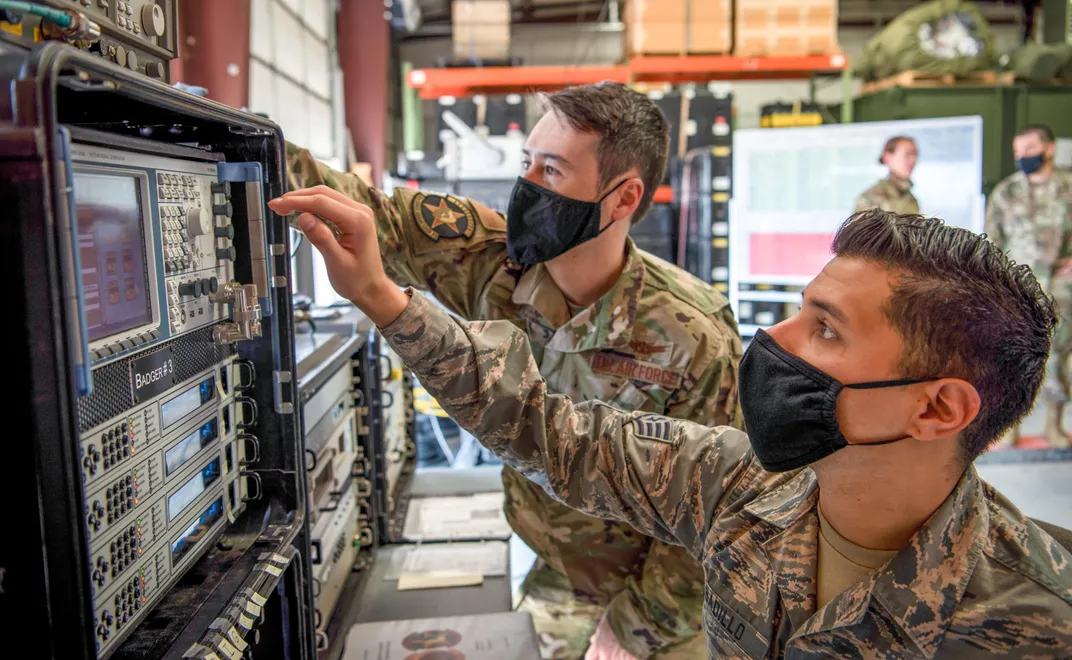
Although electronic warfare remains today’s top concern, attacks on spacecraft can be more direct than jamming. Anti-satellite rockets were test-fired from warplanes more than 30 years ago (see “The First Space Ace,” April/May 2018) and cruise missiles are capable of taking out ground stations. Recent “inspector satellites” like Kosmos 2543 could cause all kinds of mischief if they come close to a working satellite. And laser weapons have long been on the drawing board. A ground-based laser with enough energy could burn a hole in a spacecraft, causing sudden outgassing that pushes it into an uncontrollable spin. A laser mounted on another spacecraft, needing much less power, could be more surgical in its attack. “You could blind the infrared sensors on missile warning satellites,” Harrison says. “You could dazzle the optical sensors on some of our intelligence satellites, and now you’ve got a multibillion-dollar piece of space debris.”
Most of the Space Force’s tactical plans for countering these threats remain classified. There could be a new kind of shielding for space-based infrared sensors, for example, that the public would never know about. Such work is ongoing, Space Force officials confirm without offering details. “We began prototyping and demonstrating and preparing for what I’ll call abilities to protect and defend our assets, and we did that extensively in the [2020] budget,” General Thompson told the House Appropriations defense subcommittee during an open hearing in March. Any further information was shared in a closed session.
Whatever the Space Force is working on, it’s unquestionably—at least for now—the military’s top command for all things exo-atmospheric. “I think that’s important,” says Todd Harrison of CSIS, “because the last thing we want is to end up with three or four different Space Forces in the services.” Pentagon watchers will be keeping a careful eye on the bureaucratic maneuvering. The Space Force has already (so far) been denied ownership of the Air Force’s X-37B mini-spaceplane, which has flown thousands of days in orbit. This doesn’t bode well, Harrison says. “We should learn the lesson from 1947, when we created the Air Force,” he says. “We left substantial air components in the other services. We never really established clear lines, who is doing what in the air domain, so now we have a lot of redundancy.”
In its second year, the Space Force may find the battlefront in Washington as important as the one in Earth orbit.
The Sentinels
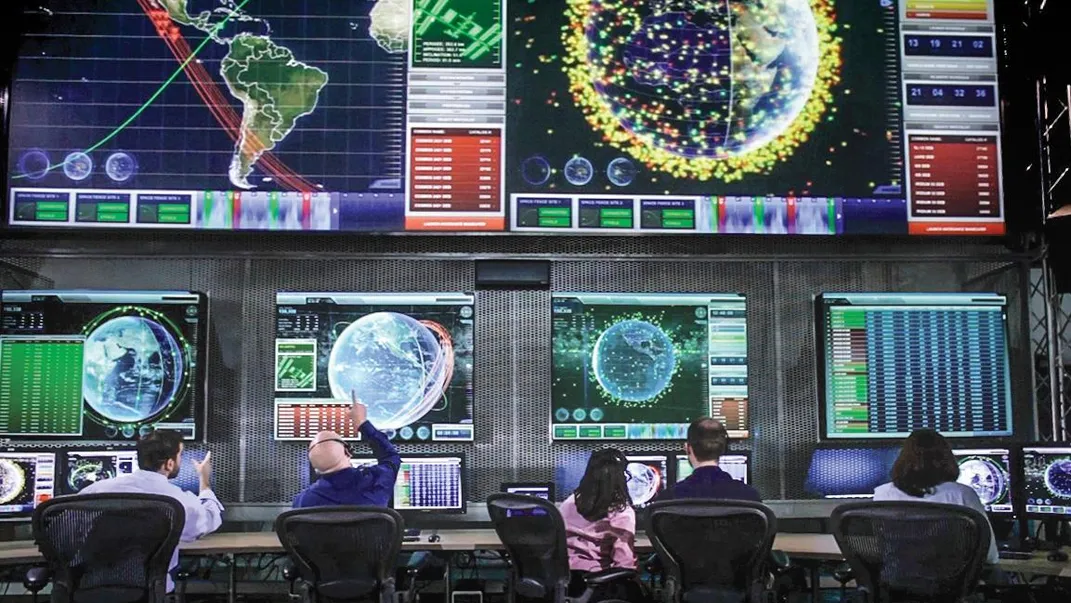
Apart from operating U.S. spy satellites—still the province of the National Reconnaissance Office—and providing early warnings of missile launches, which is NORAD’s job, the Space Force has taken on most military jobs having to do with the space domain, including tracking objects in orbit. Last year a powerful radar called the Space Fence, developed by the Air Force, began operating at Kwajalein atoll in the Pacific. Its S-band radar can detect objects as small as a marble, leading to a 10-fold increase in the total number of objects tracked by the previous system. The Space Force will also use the $2 billion radar to closely monitor launches, orbital maneuvers, and specific spacecraft in various orbits. This “space situational awareness” is itself a form of deterrence.
The new service also inherited the Air Force’s responsibility for notifying the world if there is going to be a collision in space, which they call a “conjunction.” They don’t want the gig, however, and efforts continue to have that role filled by the Department of Commerce. According to their preference, Space Force would still collect the data, but Commerce would do the notifying. The outcome of this tug-of-war could be a good gauge of Space Force’s political clout inside—and outside—the Pentagon in years to come.